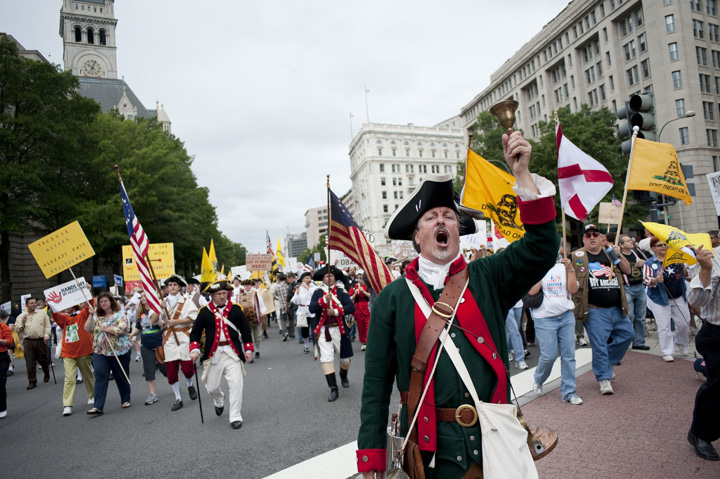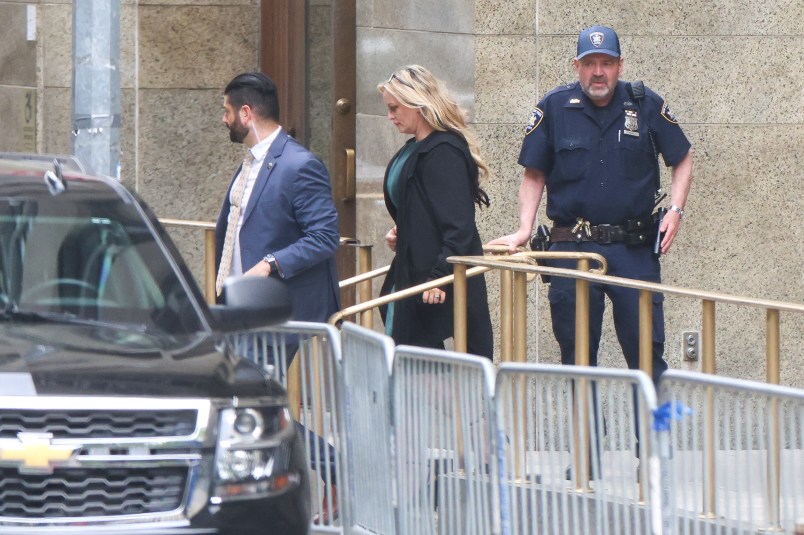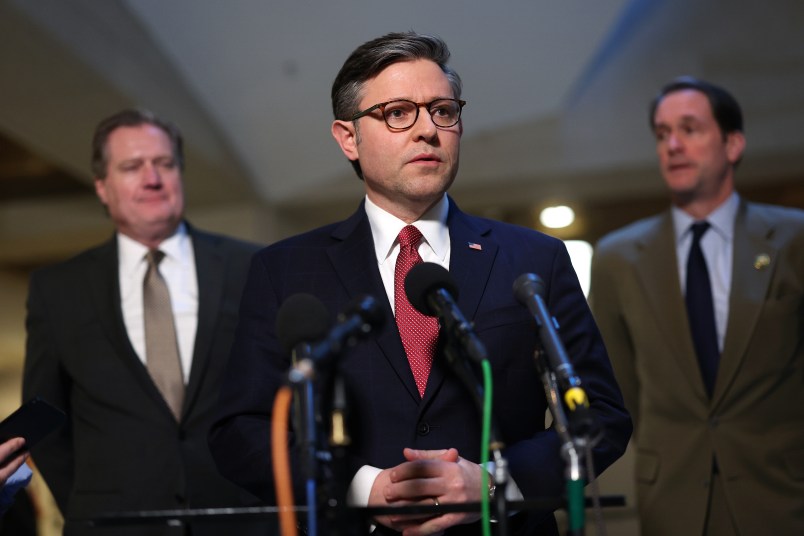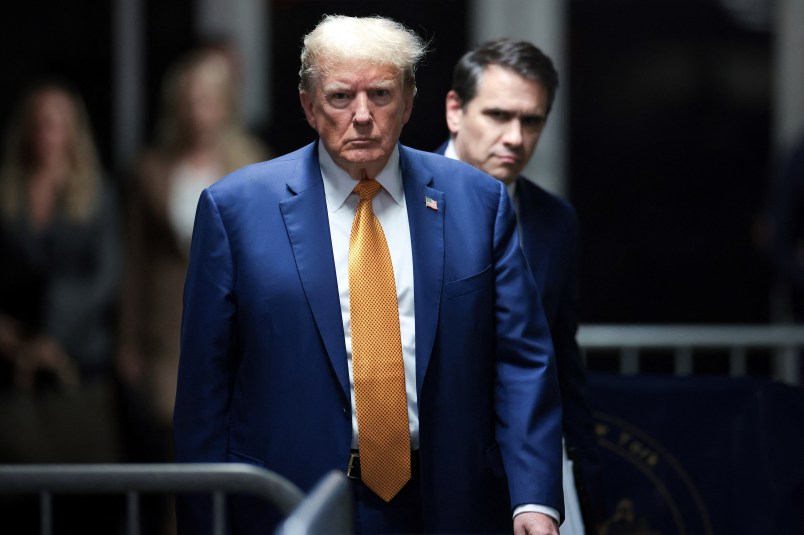The stated goal of Tea Party: The Documentary Film (a movie made by tea partiers, for tea partiers) is to reveal the heart of the movement, “to share the story with those on the outside who are looking to understand its true nature.”
In that, it fails. The tea partiers it follows — a pastor/Revolutionary War re-enactor, a black Libertarian, a health insurance agent, a urologist and a Tea Party organizer — talk about protecting their freedoms. But which freedoms?
The confusion may be a product of the film’s production. The movie has a plotline of sorts, following the partiers on their way (both physically and philosophically) to the 9/12 march, but it also takes us on wild, nonsensical tangents and relies heavily on the montage.
We’re taken to a restaurant in Georgia called the Right Wing Tavern, where “The Kennedy” sandwich features a dip “for drowning.” We watch a Revolutionary War re-enactor struggle for a full minute to buckle his seatbelt before he takes off toward a tea party.
One montage includes a time-lapse of grass growing. Indeed, the movie champions the grassroots while liberally featuring FreedomWorks reps, including Dick Armey. (FreedomWorks helped funnel funding to the movie.)
The movie cries, “We’re not racists!,” using the white re-enactor/pastor’s black congregation to prove it.
But at its core, the film is devoted to why the tea partiers do what they do. They are cast as “real Americans:” people who eat dinner with their children, coach Little League, and help their neighbors paint a house.
It’s about what each of them are fighting, or fighting for. Each is earnest, passionate and sincere.
But after 105 minutes, one still does not understand what freedom these tea partiers are fighting for. They talk only about freedom. They fear they’re on the verge of losing their freedom, and want to protect it for their children.
But what freedom are they scared to lose? No one ever really says.
The urologist is scared that health care reform, specifically a public option, will deny patients the freedom to choose their own treatment. But he’s the only one focused solely on health care. Many tea partiers are upset about a broader range of things: bailouts, the stimulus, government involvement in the auto industry, cap-and-trade.
It’s never spelled out, but one could string the montages together into one stream of logic:
The federal government has, via TARP et. al., taken some control over the banks and the car companies. Health care opponents argue the government is angling for control over hospitals and insurers; cap-and-trade opponents argue pols want to tell private businesses how to operate, too.
It may seem as if the government is slowly taking over, well, everything. And a government that controls what was once the private sector is one that would control its citizens and have no qualms about revoking the Bill of Rights.
Is that the true heart of the tea parties? It’s just a guess. But there is one truly telling moment. The Libertarian, driving along a suburban road and explaining his philosophy, tell us he’s fighting against change. Things, he says, just don’t need to change.









